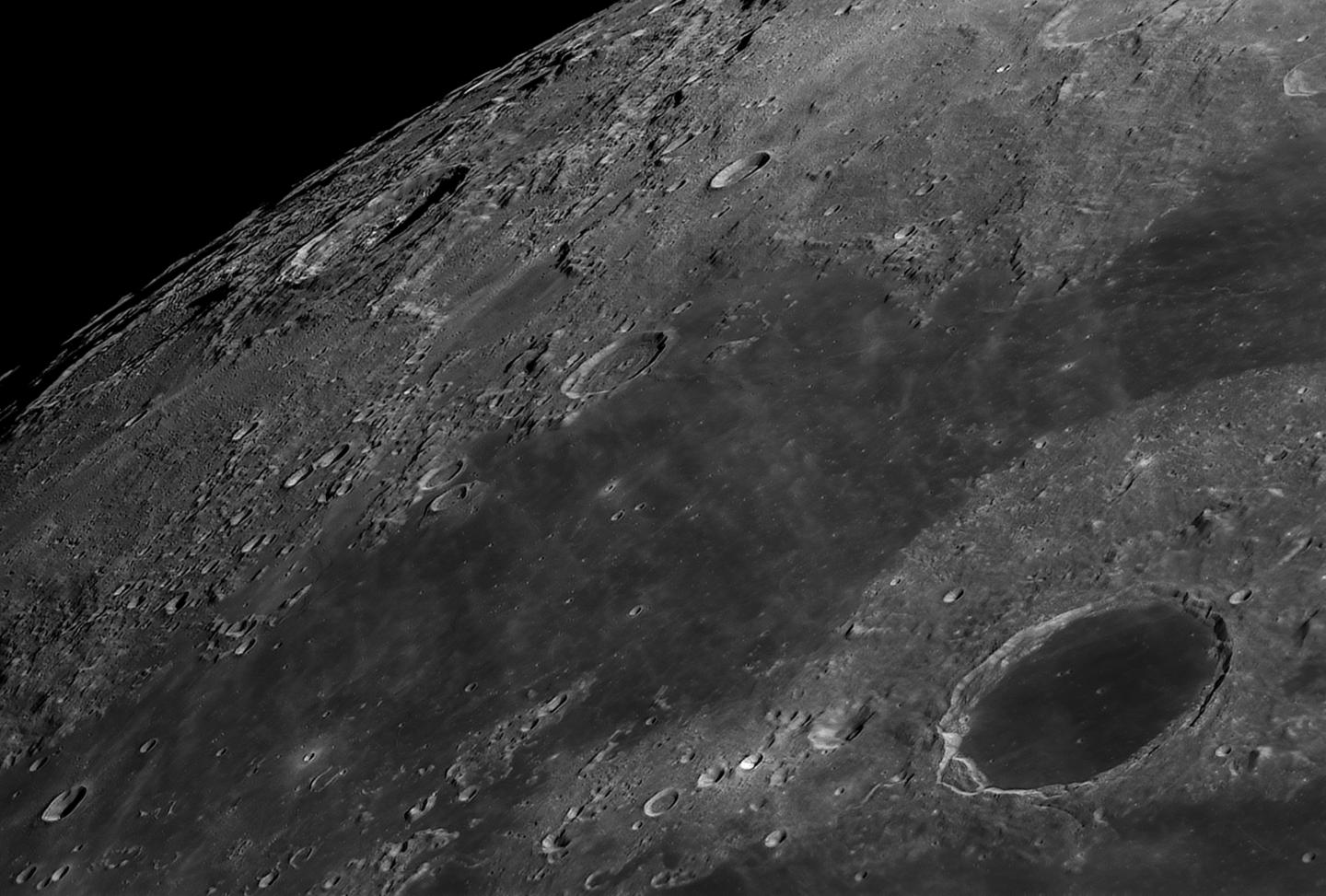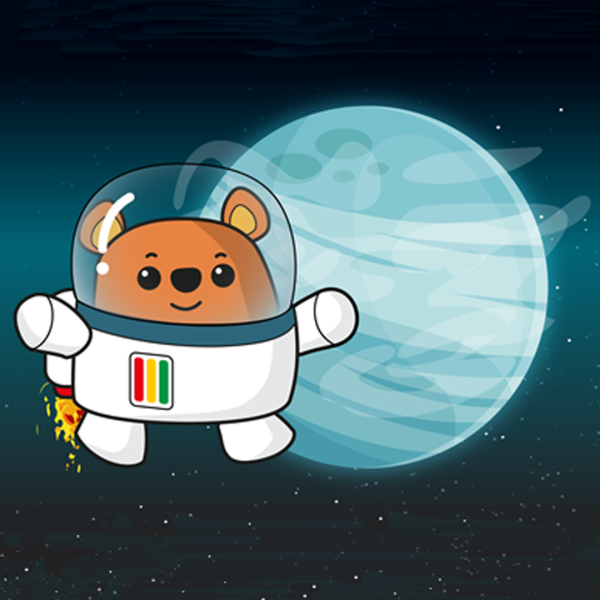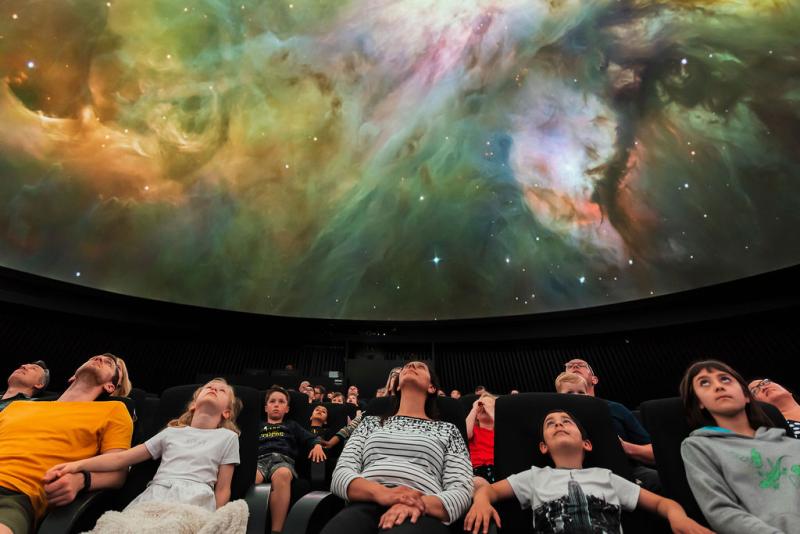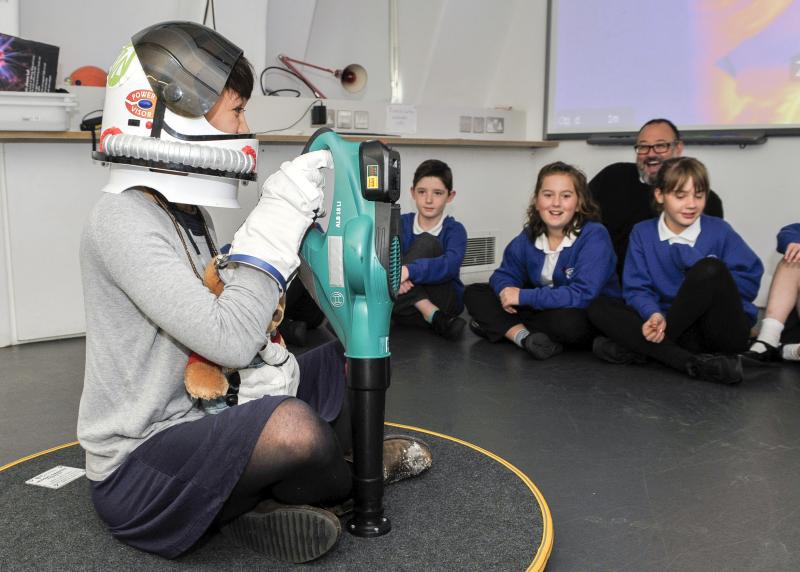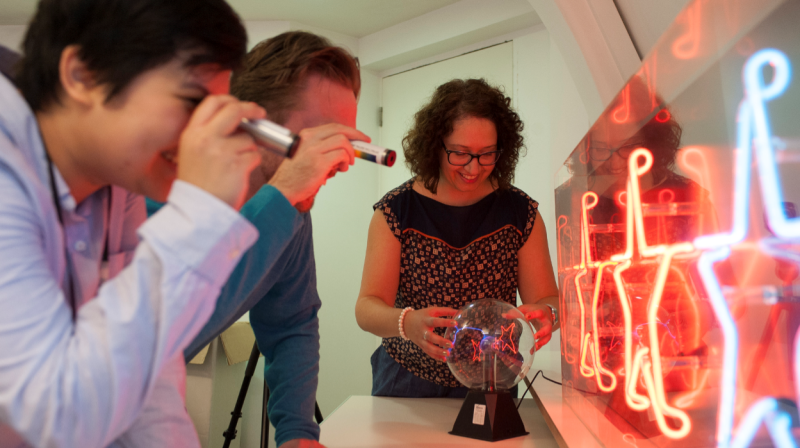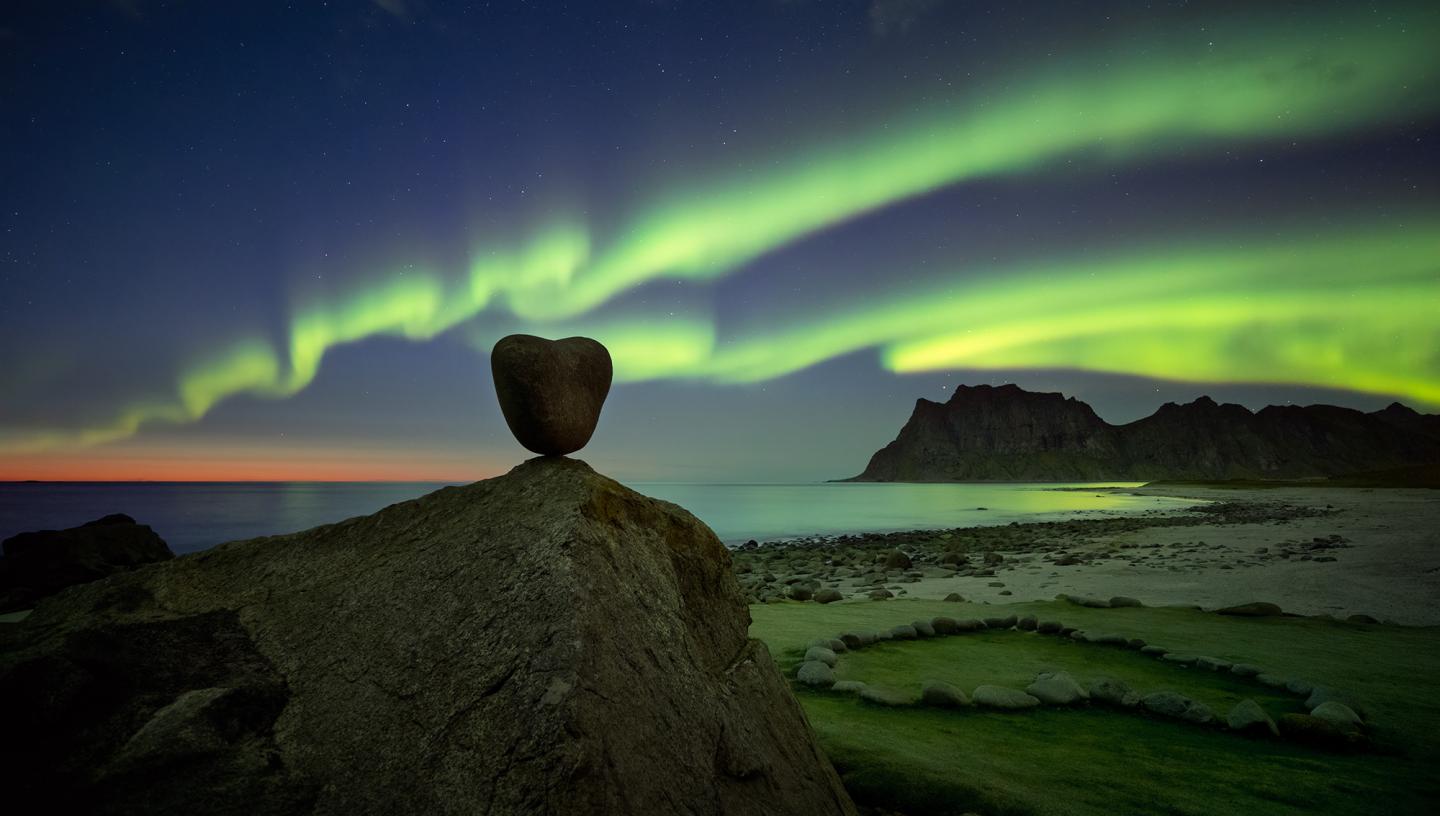
Discover what to see in the night sky in December 2021, including the Geminids meteor shower and the winter constellation of Orion the Hunter.
Top 3 things to see in the night sky in December
- Throughout the month - Spot the constellation of Orion the Hunter
- 10 December - Have a look at some lunar craters
- 13/14 December - It's the peak of the Geminid meteor shower
(Details given are for London and may vary for other parts of the UK)
Look Up! Podcast
Subscribe and listen to the Royal Observatory Greenwich's podcast Look Up! As well as taking you through what to see in the night sky each month, Royal Observatory Greenwich astronomers pick a topic to talk about.
For December, they're talking about the stellar beginnings of heavier elements and they're chatting about data that suggests Algol may have more companion stars than originally thought. Have a listen below, then vote for your favourite story from this episode on our Twitter poll (@ROGAstronomers) during the first week of the month.
Our podcast is available on iTunes and SoundCloud
Astronomy in December 2021: key events and what to see
Throughout the month: Orion the Hunter
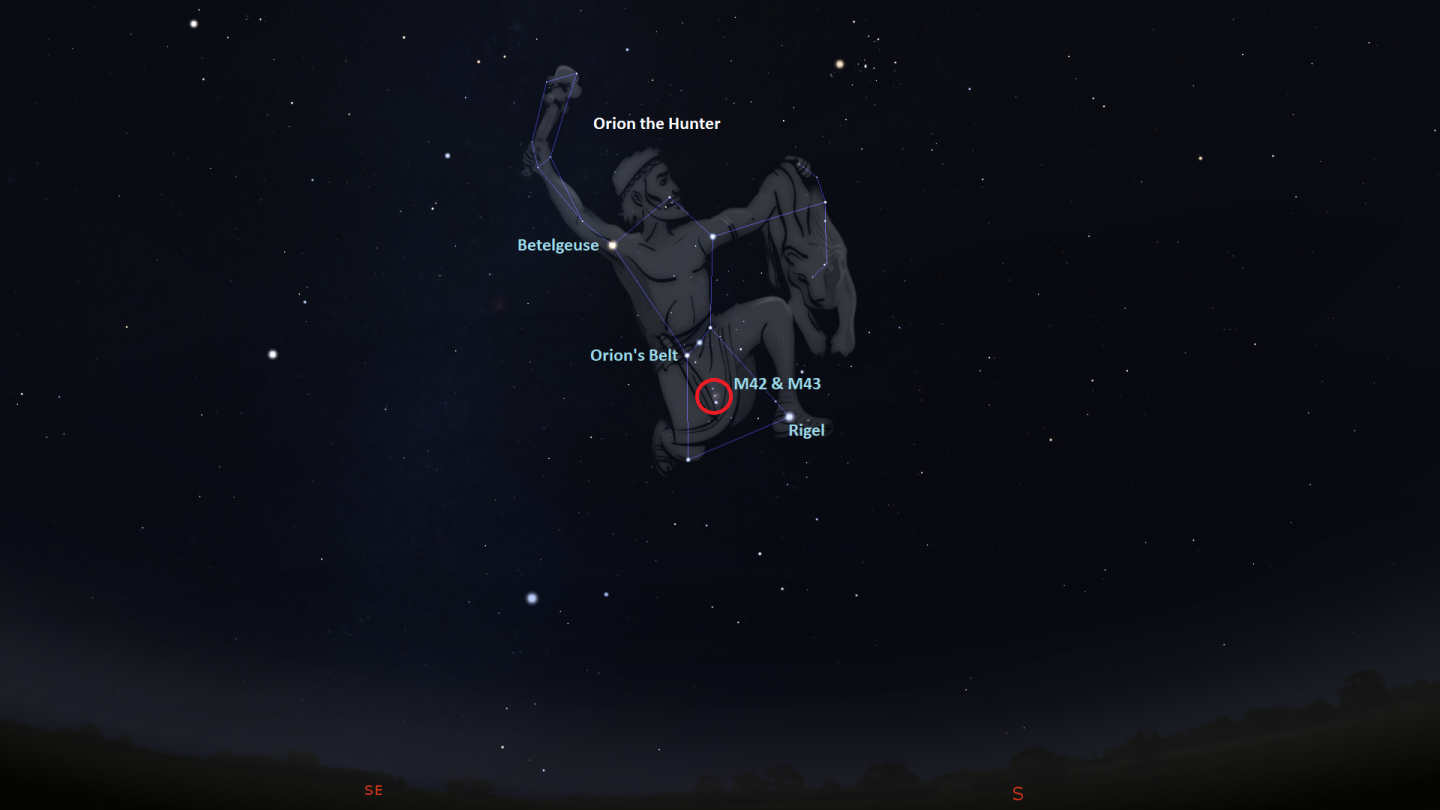
Orion the Hunter is one of the most prominent and recognisable constellations in the northern hemisphere winter night sky. Named after the hunter, Orion, in Greek mythology, the constellation contains some of the brightest stars of the night sky and so is relatively easy to spot even in light-polluted London. Orion can be found in the south-to-south-east throughout all of December. Look for the bright blue-white supergiant Rigel at his left foot, and the bright red supergiant Betelgeuse at his opposite shoulder.
Midway between them, you should be able to find the three stars Alnitak, Alnilam, and Mintaka in a line, making up the famous belt. There is also a cornucopia of deep sky objects to be found within Orion, with star forming regions like M42, the Orion Nebula, and M43, De Mairan’s nebula, being found just below his belt. These are part of the larger superstructure dubbed the Orion Molecular Cloud Complex, containing many stellar nurseries spanning hundreds of light years.
Throughout the month: Jupiter and Saturn
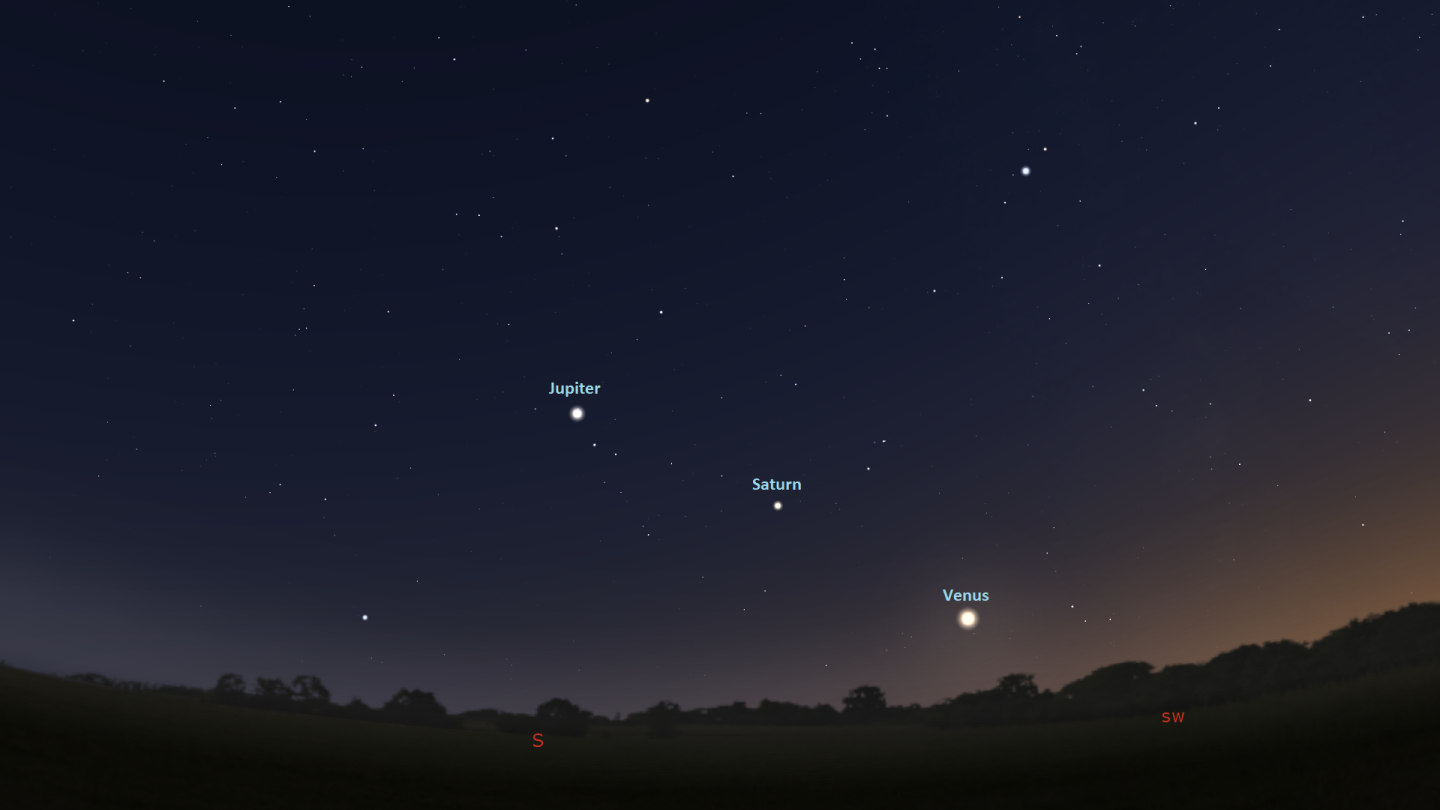
While Jupiter and Saturn continue to be visible in the early evening sky, they are setting earlier and earlier, so if you wish to spot them use the early sunset to your advantage, and take a look in the south to south-west sometime between 6 and 7pm. You will know that you’re looking at the planets rather than stars by their lack of ‘twinkling’. It’s even easier with a telescope – even if you can’t quite make out the stripes on Jupiter, you will be able to see a distinct disc, rather than a tiny point of light.
You may even be able to see some of the moons orbiting around Jupiter, just as Galileo Galilei did in 1610 when he spotted the four largest moons of Jupiter: Callisto, Europa, Io, and Ganymede. His telescope was only capable of 20x magnification, so even if you’ve just got a pair of binoculars, it’s worth a try on a clear dark night.
10 December: Observe craters on the Moon
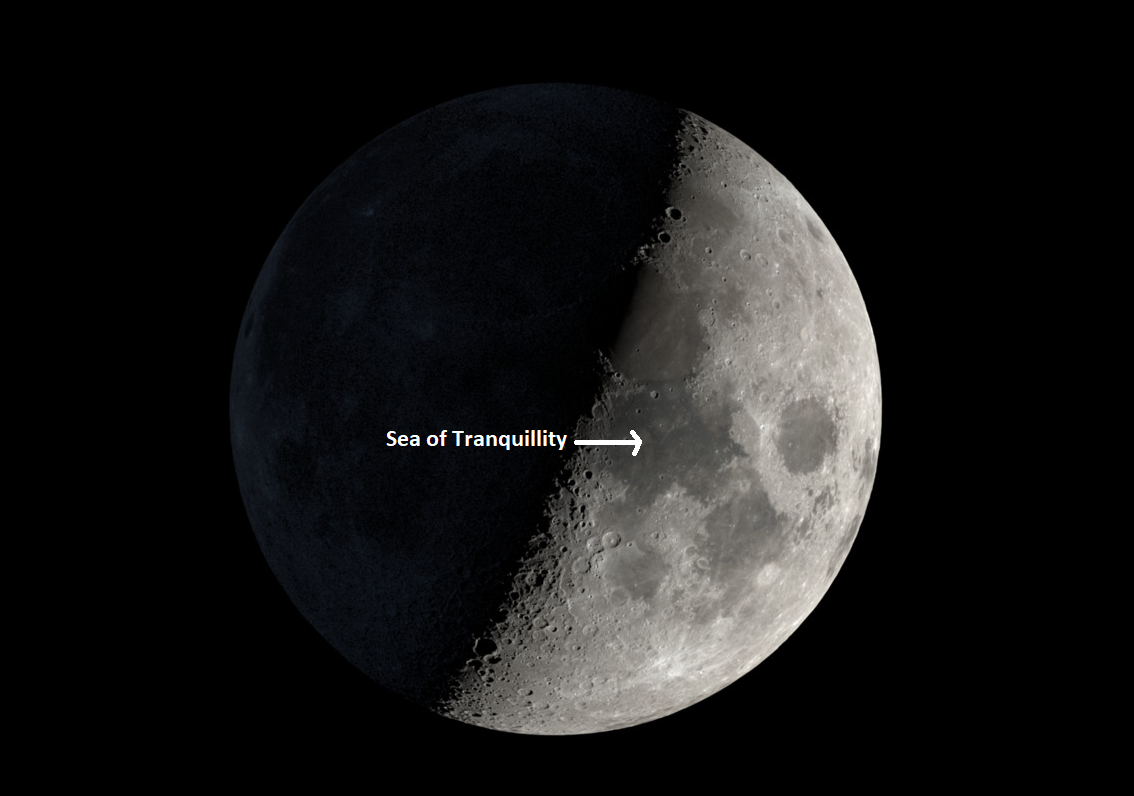
Our own moon is another excellent target for both naked eye and binocular observations. While the full moon occurs on the 19th of this month, if you’ve got a pair of binoculars and wish to look at some features up-close, we recommend observing earlier in the month, before the Moon is fully illuminated. Mare Tranquillitatis, the Sea of Tranquillity, the landing site for Apollo 11, will be illuminated from around the 10th of December, though you’ll need a little more magnification than you get from your average pair of binoculars to see exactly where the Eagle landed!
Near Mare Tranquillitatis lies Mare Serenitatis, the Sea of Serenity. Serenitatis lies to the north-north-west of Tranquillitatis from the perspective of us in the northern hemisphere, however our southern hemisphere friends will need to look invert these instruction, and look to the south-south-east. Serenitatis has an impact crater called Posidonius at its north-eastern (or south-western) edge. This is best viewed around the 10th-12th, as at this time it will lie close to the terminator, the line between lunar day and night, producing deep shadows that emphasise the structure of Posidonius.
13/14 December: The peak of the Geminid meteor shower
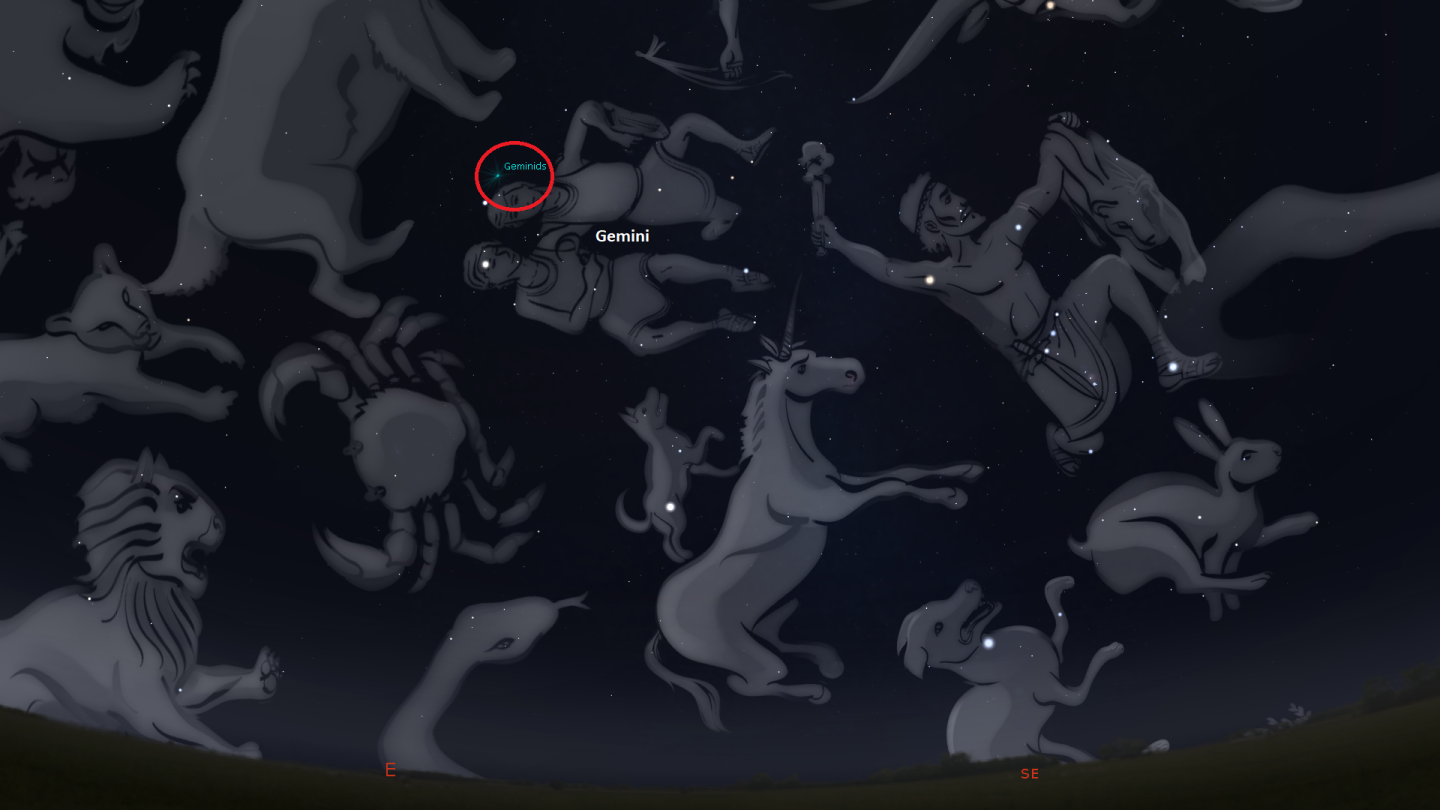
The annual Geminids meteor shower is probably one of the most famous showers in the northern hemisphere, with over 100 meteors per hour being expected. Those living in the southern hemisphere may be able to catch a glimpse of some meteors too, though depending on when Gemini rises, you may only have a small window in which to observe. Unusually for a meteor shower, this one arises as the Earth passes through the debris left behind by an asteroid, in this case asteroid 3200 Phaethon.
We can expect to see some meteors throughout the first half of December, but you’ll have to wait until late on the 13th/early on the 14th for the peak of this shower. Best views are expected a little after 2am, when Gemini is high in the southern part of the night sky and the Moon has set below the horizon. While, weather permitting, you will almost certainly see some meteors earlier in the evening, the waxing gibbous Moon will wash out some of the fainter ones, so if you can, stay up late to enjoy the show.
Southern Hemisphere: Throughout the month - Orion the Hunter
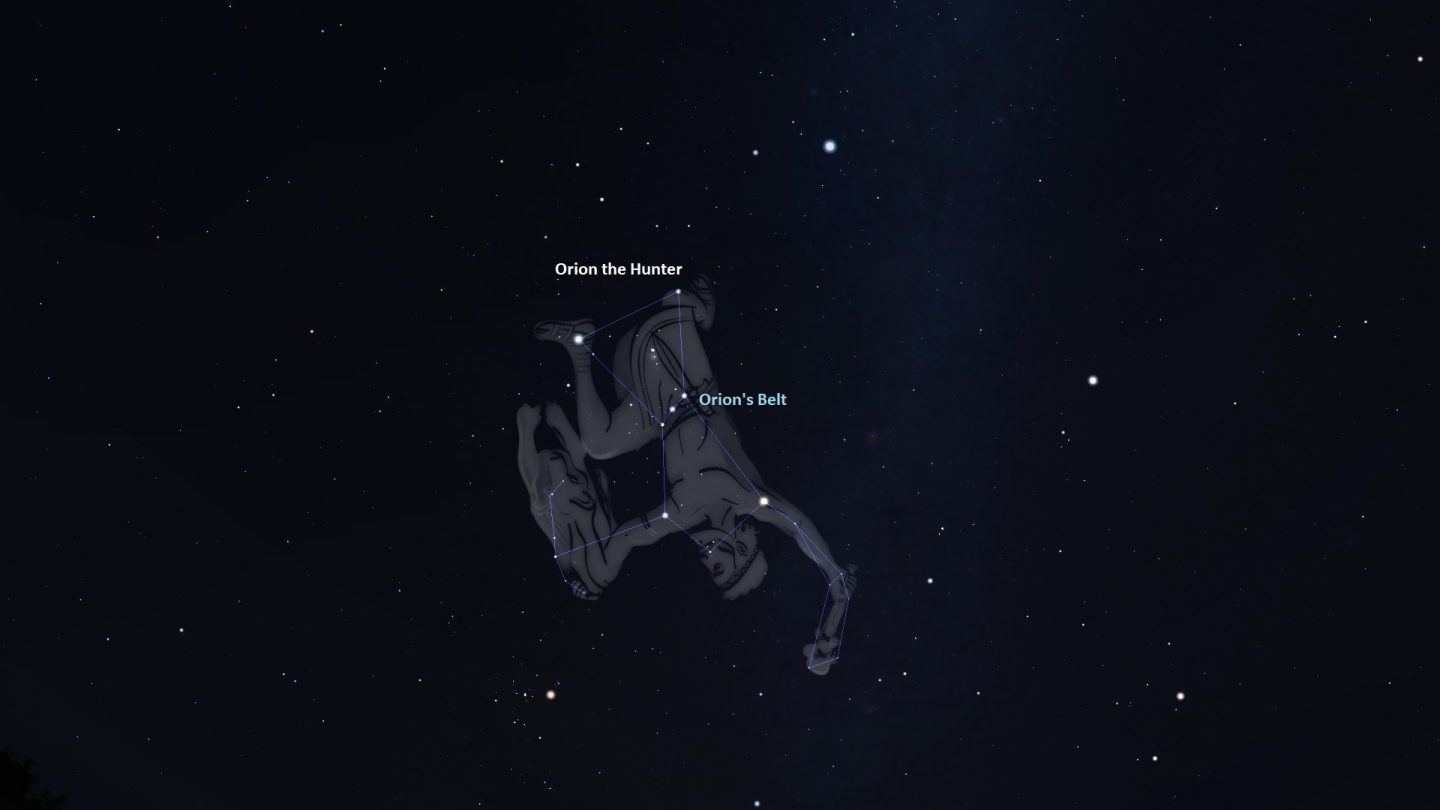
Orion is not just visible in the northern hemisphere: as it lies on the celestial equator you can see it in the December night sky from just about everywhere in the world. This means, of course, that this group of stars appears in stories of peoples all over the world, not just the Ancient Greek’s story of Orion the Hunter. The seven brightest stars make up the Polynesian constellation Ka hei-hei o na keiki, so named as it resembles patterns made by string games similar to what you may have heard called ‘cats cradle’. The ‘belt’ of Orion is known as Las Tres Marias, or ‘the three Marys’ throughout much of Latin America and the Philippines. It is also isolated as its own constellation — Kulkunbulla — by the Boorong people of Victoria, Australia. The Boorong people see Orion's belt and sword as two young men dancing.
The Moon's phases this month
- 4 December: new moon (7:43am)
- 11 December: first quarter (1:36am)
- 19 December: full moon (4:36am)
- 27 December: last quarter (2:24am)
'Landing over the Plato Area © Alessandro Bianconi' is one of the shortlisted images from the 2021 Astronomy Photographer of the Year competition. See the winning and other shortlisted images of the competition in a new exhibition at the National Maritime Museum.
Stargazing Tips
- When looking at faint objects such as stars, nebulae, the Milky Way and other galaxies it is important to allow your eyes to adapt to the dark – so that you can achieve better night vision.
- Allow 15 minutes for your eyes to become sensitive in the dark and remember not to look at your mobile phone or any other bright device when stargazing.
- If you're using a star app on your phone, switch on the red night vision mode.
Need a stargazing telescope or binoculars? Check out our range of high quality observing equipment recommended by Royal Observatory Greenwich astronomers.
See our range of observing equipment
Share your pictures
This month's banner image is 'Arctic Love' taken by Erika Valkovicova and it is one of the shortlisted images from the 2021 Astronomy Photographer of the Year competition.
Do you have any images of the night sky? If so, why not share your photos via our Royal Observatory Astrophotography Facebook group.
You can also connect with us via Twitter: @ROGAstronomers
Planetarium Shows
Join us for live planetarium shows
Royal Observatory Greenwich YouTube Channel
Subscribe to our YouTube channel and join us on a journey through time and space as we explore our Universe. You'll find a selection of videos on our channel, including our Observatory Online video series in which our astronomers explore different topics in Astronomy and Space Exploration.
Resources for teachers and students
The Royal Observatory Greenwich's learning team has also created:
- Free animated videos that answer the biggest questions in astronomy and free resources to go alongside them.
- A whole host of podcasts featuring interviews with real space scientists, astronauts and active researchers working in UK universities.
- A 'learning at home' hub which contains a suite of resources for you to use at home.
